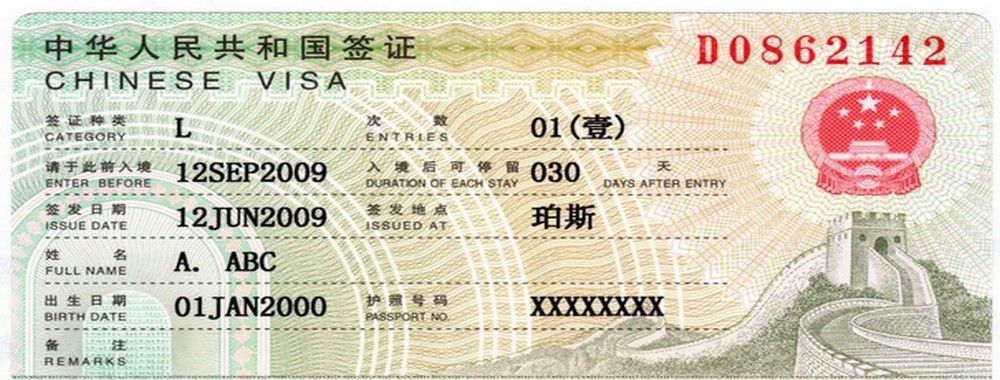15 Popular Reasons to Become a Freelancer or Entrepreneur

- 851 shares
- 5 years ago
Digital nomadism is a lifestyle that lets individuals work remotely while traveling or living in different locations. This trend has gained popularity due to advancements in technology and the rise of remote work opportunities. Digital nomads can work in a variety of fields, software development and content creation being some of the most popular. In user experience (UX) design, designers who are digital nomads create user-friendly digital products and collaborate with teams online while they explore new places around the world.
The first place for a potential digital nomad to go is the mirror—and ask what they can give to clients online.
© Interaction Design Foundation, CC BY-SA 4.0
The way people work has changed dramatically, particularly in the 2020s. Advances in technology—along with changes in business mindsets and models—have ushered in a shift that’s seen many professionals enjoy the option of remote work. This has seen the rise of digital nomadism, a phenomenon that was already popular—first mentioned as a concept in 1964 and coined as a term in 1997. The digital nomad’s lifestyle lets individuals work from pretty much anywhere in the world—and digital nomad UX designers can seize on exciting travel opportunities. It’s possible with a passport, visa, some preparation and the “passport” that a solid UX portfolio can offer to help get the contracts UX designers and UI (user interface) designers need to support themselves abroad:
Design Director at Societe Generale CIB, Morgane Peng explains important points about UX portfolios:
First, a UX professional must consider a few preliminaries, such as how resilient and resourceful they are to travel for an extended period away from family and friends. Once they’re sure the lifestyle is for them, it’s time to examine the realities of the places they might want to go.
Once a prospective digital nomad looks past the adventure and romance of an exciting city environment or beach-island getaway, several key factors should occur to them—namely:
Cost of living: The ideal location offers a balance between affordability and quality of life. Safety is a factor here, too, including the available quality of healthcare in the destination country.
Internet speed: A reliable and fast internet connection is crucial for remote work. Communication lines will also be life lines in this sense, and one can’t earn if one can’t deliver.
Safety: Research the safety aspects of potential destinations, especially if traveling alone. For potential nomads from certain countries—like the United States or United Kingdom—it’s wise to consult government advisories about avoiding potentially unstable regimes or unrest abroad. Common sense must come first.
Visa options: Many countries around the world offer specific visas for digital nomads. This makes extended stays easier.
Community: The presence of other digital nomads can provide networking opportunities and combat loneliness. As much as a digital nomad might want to embrace solitude at first, the need for community often comes to the surface quickly.
Work-life balance: Consider locations that offer both professional opportunities and leisure activities. This also translates to how much work a nomad would need to do per week in order to make the destination worthwhile. So, more expensive locales will call for more profitable contracts—for the nomad to foot bills for rent, food and more.
Several cities and countries have emerged as popular digital nomad hubs. Top digital nomad destinations include—in no particular order:
Portugal: Known for its low cost of living, pleasant climate and beautiful beaches.
Portugal is a perennial favorite.
© Tim Marting, Fair Use
Thailand: Offers a blend of culture and modernity with a low cost of living.
Mexico: A vibrant land with affordable living costs.
Vietnam: A popular choice among digital nomads.
Japan: Despite higher living costs, a fast-growing destination for remote workers.
South Korea: Features a tech hub in Seoul with high-speed internet and modern amenities.
Bali, Indonesia: Famous for its stunning beaches and laid-back lifestyle.
Bali is another popular go-to for digital nomads.
© Tim Marting, Fair Use
Digital nomads need to pay close attention to visa requirements for working remotely in different countries. Many nations’ digital nomad visas typically last 12 months with the option to extend. Countries with digital nomad visas let visitors stay while they work remotely for foreign-based employers or businesses.
The application process for digital nomad visas varies by country—and this calls for careful research—but it generally involves getting together necessary documents such as:
Valid passport copies.
Proof of remote work capability.
Income verification.
Accommodation confirmations.
While some countries have streamlined processes, others may ask for more extensive documentation—or have longer processing times. It's crucial for digital nomads to research and comply with the specific requirements of each destination—and that includes abiding by each nation’s criminal record stipulations.
Spain is just one example of a nation that offers digital nomad visas.
© Ministerio de Asuntos Exteriores, Unión Europea y Cooperación, Fair Use
For a UX design digital nomad, remote work is a must, as will be the skill set and knowledge base in UX or associated industries—in the same way as coding is necessary for digital nomad developers. To travel abroad for extensive periods means to travel light—with well-picked, versatile clothing and tools of the trade such as a reliable laptop or two, smartphones, headphones and other equipment to optimize working in a highly connected way.
Digital nomads’ experience will serve them well in the international marketplace—as will their world-class online design school certificates. Before they embark, as self-branded freelancers, they need to have a value proposition to back up their portfolios, all ready to serve to prospective clients.
Morgane Peng explains vital aspects of value propositions in this video:
Once they’re ready to thrive in this career path, new nomads should focus on several key areas:
For those looking to start their digital nomad journey, there are several avenues to explore. Job boards dedicated to remote work offer a wide range of opportunities. These platforms cater specifically to remote workers, and they can be an excellent starting point.
Freelancing platforms offer short-term gigs and longer-term ones that can lead to full-time positions for those who build a strong reputation. It helps to have a strong resume—for instance, on LinkedIn.
© LinkedIn, Fair Use
As financial management is crucial for digital nomads, they’ll need to:
Track income and expenses: This practice helps digital nomads:
Understand their monthly earnings and spending.
Find areas for cost-cutting or raising their income.
Set realistic financial goals—including having an emergency fund for backup.
Monitor progress and adjust plans as needed.
Create a budget: A well-planned budget helps digital nomads:
Live within their means and avoid debt.
Save for short-term and long-term goals.
Allocate money wisely.
Reduce financial stress.
Look into banking and payment options: Digital nomads should research:
Global banks that offer accounts with no foreign transaction fees.
Digital payment platforms for lower transfer fees.
Reputable currency exchange services.
Credit cards that offer travel rewards.
© Marcelo Duran, Fair Use
A range of services and products have emerged for nomads to support their lifestyles:
Virtual address services: These services provide digital nomads with a fixed mailing address, forwarding mail and packages to their current location.
Virtual phone numbers: Services that offer local phone numbers in various countries let nomads maintain a professional image and manage communication effectively.
Healthcare and insurance: Some specialized insurance plans cover medical emergencies, trip cancellations and lost belongings for digital nomads.
Banking services: Online banking options that cater to the specific needs of digital nomads, offering features like multi-currency accounts and low foreign transaction fees.
Co-working spaces: Professional work environments that provide reliable amenities, networking opportunities and a sense of community for digital nomads—many popular digital nomad destinations have excellent ones.
It’s vital to build—and maintain—a professional network for digital nomads, despite the challenges of constant travel. Strategies for this include:
Leverage online platforms:
Use sites such as LinkedIn to connect with professionals in the field.
Join relevant groups and engage in discussions.
Use platforms like Nomad List to connect with other digital nomads.
Attend virtual and in-person events:
Participate in online conferences and workshops.
Visit local coworking spaces to meet other remote workers.
Attend meetups and events that local communities organize.
Nurture existing relationships:
Stay in touch with former colleagues, mentors and classmates.
Follow up with people from conferences or online.
Give back to the community:
Offer mentoring or volunteering services.
Participate in online discussions and share expertise.
Naturally, the professional “passport” will be just as important as the one that digital nomads use to go from country to country. Therefore, it’s vital for potential nomads to make sure they pave the way professionally before they make their journey physically. A solid UX portfolio will help UX designers, user interface (UI) designers and other UX professionals stand out from the crowd.
Watch as Design Director at Societe Generale CIB, Morgane Peng explains important points about how to make an outstanding UX portfolio:
Overall, the digital nomad lifestyle is gaining traction among professionals and the clients who turn to them. A vast wealth of life experience and work opportunities await those who plan effectively and have the right attitude regarding how to embrace the opportunities that come with the digital nomad lifestyle. That includes the need to prepare for how best to manage the risks. Nevertheless, UX professionals who take this route—or series of routes—can enjoy a unique form of freelancing. They can empower themselves to reap the rich rewards of all that digital nomadism has to offer at both work and play—and come away with the experience of a lifetime.
Chiang Mai remains one of the most popular destinations for digital nomads.
© Panupong Roopyai, Fair Use
Our course Build a Standout UX/UI Portfolio: Land Your Dream Job with Design Director at Societe Generale CIB, Morgane Peng provides a precious cache of details and tips for freelancers.
Our piece, Where Do You Want to Go, Digital Nomad? Offers a wealth of insights.
Read our piece, 10 Brilliant Travel Tips for Digital Nomads and Business Travellers for even more helpful insights.
See how to prepare that much better with our piece, Downsize Your Life, Digital Nomad.
Go to 66 Digital Nomad Visa Countries in 2024 by Tim Marting for important insights
Read a compelling account with tips in Digital Nomads: What is it and what are the reasons to become one? by Marcelo Duran.
Check out Digital Nomads: Talent Opportunity, Risky Adventure or Both? by Susan Goldenson, Christopher S. Nickson & Scott Nostaja for additional insights.
To become a digital nomad, follow these steps:
Choose a remote-friendly career: Opt for jobs like web design, content creation or digital marketing that allow remote work.
Develop essential skills: Improve your digital skills and make yourself valuable in the remote job market. Platforms like IxDF offer courses to help you learn.
Secure remote work: Find remote jobs on websites like Remote.co, We Work Remotely, and FlexJobs.
Plan finances: Save money, set a budget and consider the cost of living in different countries.
Prepare for travel: Get the necessary visas, research destinations and make sure that you have reliable internet access.
Join a community: Connect with other digital nomads for support and networking.
Our course Build a Standout UX/UI Portfolio: Land Your Dream Job with Design Director at Societe Generale CIB, Morgane Peng provides a precious cache of details and tips for freelancers.
Our piece, Where Do You Want to Go, Digital Nomad? offers a wealth of insights.
They do it through several methods:
Job boards: Websites like Remote.co, We Work Remotely and FlexJobs list remote job opportunities across various industries.
Networking: Joining online communities and attending meetups help digital nomads connect with potential employers and other freelancers.
Freelance platforms: Platforms like Upwork, Fiverr and Freelancer offer gigs and projects that can lead to long-term remote work.
Social media: LinkedIn, Twitter, and Facebook groups dedicated to remote work often feature job postings and opportunities.
Company websites: Many companies list remote job openings directly on their career pages.
Watch as Principal and Owner of Lebsontech LLC, Cory Lebson explains how to brand yourself as a UX professional:
Watch our Master Class Beyond Design: Practical Tips for Freelancing & Creating Your Brand with Nakita M. Pope, Chief Chick and Principal Brand Strategist of Branding Chicks for a wealth of helpful information.
They typically follow these steps:
Budgeting: Create a budget to track income and expenses. Use apps like Mint or YNAB to keep everything organized.
Saving: Set aside an emergency fund to cover unexpected costs. Aim for three to six months of living expenses.
Banking: Use international banks or online banks that offer low fees and good exchange rates. Services like TransferWise and Revolut can help manage money across borders.
Tax planning: Understand tax obligations in your home and host countries. Consult with a tax advisor who’s experienced in international tax laws.
Insurance: Get travel insurance that covers health, belongings and travel disruptions. Companies like World Nomads offer plans tailored for digital nomads.
Read our piece, 10 Brilliant Travel Tips for Digital Nomads and Business Travellers for even more helpful insights.
See how to prepare that much better with our piece, Downsize Your Life, Digital Nomad.
The best nations for digital nomads offer a mix of affordability, good internet and vibrant communities. Here are some top choices:
Thailand: Known for its low cost of living and strong digital nomad community, especially in Chiang Mai.
Portugal: Lisbon and Porto offer a great lifestyle with affordable living and a growing tech scene.
Mexico: Cities like Mexico City and Playa del Carmen provide good internet, affordable living and a lively culture.
Indonesia: Bali is famous for its beautiful scenery, low costs and numerous coworking spaces.
Spain: Barcelona and Madrid attract digital nomads with their warm climate, rich culture and strong internet.
Read our piece, 10 Brilliant Travel Tips for Digital Nomads and Business Travellers for even more helpful insights.
See how to prepare that much better with our piece, Downsize Your Life, Digital Nomad.
They typically take steps like these:
Research visa requirements: Check the visa requirements for each country you plan to visit. Some countries offer special digital nomad visas, like Estonia and Barbados.
Apply for appropriate visas: Apply for tourist or long-term visas as needed. Make sure you meet all requirements and have the necessary documents.
Stay updated on laws: Keep up with local laws and regulations to avoid legal problems. Join expat communities online to get the latest information.
Use legal services: Consult with immigration lawyers or services that specialize in helping digital nomads. They can provide guidance and handle paperwork.
Comply with tax obligations: Understand your tax responsibilities both in your home country and the countries you visit. Seek advice from a tax professional if needed.
Read our piece, 10 Brilliant Travel Tips for Digital Nomads and Business Travellers for even more helpful insights.
See how to prepare that much better with our piece, Downsize Your Life, Digital Nomad.
These tips are helpful:
Get travel insurance: Purchase travel insurance that covers medical emergencies, accidents and routine care. Companies like World Nomads and SafetyWing offer plans tailored for digital nomads.
Research local healthcare: Understand the healthcare system in each country you visit. Identify hospitals and clinics before you go.
Carry essential medications: Bring a supply of any necessary medications and prescriptions—and know the generic names in case you need refills abroad.
Maintain a healthy lifestyle: Stay healthy by eating well, exercising and getting enough sleep.
Join healthcare programs: Some countries offer healthcare programs for digital nomads. Explore these options if you plan to stay long-term.
Read our piece, 10 Brilliant Travel Tips for Digital Nomads and Business Travellers for even more helpful insights.
See how to prepare that much better with our piece, Downsize Your Life, Digital Nomad.
Try taking these steps:
Use VPNs: Always use a virtual private network (VPN) to encrypt your internet connection and protect your data from hackers.
Enable two-factor authentication (2FA): Activate two-factor authentication on all accounts to add an extra layer of security.
Keep software updated: Regularly update your operating systems, apps and antivirus software to protect against vulnerabilities.
Use strong passwords: Create complex passwords and use a password manager to store them securely.
Back up data: Regularly back up your data to cloud storage or external drives to prevent loss of data.
Avoid public Wi-Fi: Refrain from using public Wi-Fi for sensitive transactions. If necessary, use a mobile hotspot instead.
Read our piece, 10 Brilliant Travel Tips for Digital Nomads and Business Travellers for even more helpful insights.
See how to prepare that much better with our piece, Downsize Your Life, Digital Nomad.
New digital nomads often make these common mistakes:
Poor planning: Failing to research destinations, visas and accommodation—which can lead to stressful situations.
Overpacking: Carrying too much luggage makes travel cumbersome. Pack only essentials and versatile clothing.
Ignoring time zones: Forgetting time zone differences can disrupt work schedules and communication with clients.
Neglecting finances: Not budgeting properly or overlooking currency exchange rates can strain finances.
Lack of backup plans: To rely solely on one income source or not having contingency plans can cause problems during emergencies.
Burnout: Working too much without taking breaks can lead to burnout. Balance work with leisure.
Read our piece, 10 Brilliant Travel Tips for Digital Nomads and Business Travellers for even more helpful insights.
See how to prepare that much better with our piece, Downsize Your Life, Digital Nomad.
Here are some helpful tips for taxes:
Understand tax residency: Determine your tax residency status. This depends on how long you stay in each country and local tax laws.
Consult a tax professional: Seek advice from a tax expert who’s familiar with international tax laws to understand your obligations.
Keep records: Maintain detailed records of your income, expenses and travel dates. This helps with accurate tax reporting.
File taxes in your home country: File taxes in your home country if it’s required. Some countries tax citizens on worldwide income.
Research tax treaties: Look into tax treaties between your home country and the countries you visit. These treaties can prevent double taxation.
Pay taxes locally if needs be: If you stay long-term in one country, you may need to pay local taxes.
Read our piece, 10 Brilliant Travel Tips for Digital Nomads and Business Travellers for even more helpful insights.
See how to prepare that much better with our piece, Downsize Your Life, Digital Nomad.
Here are some digital nomad packing tips:
Pack light: Choose versatile clothing that you can mix and match. Stick to essentials and avoid overpacking.
Choose quality gear: Invest in durable luggage and backpacks that can withstand frequent travel.
Include tech essentials: Bring your laptop, chargers, power banks and adapters. Make sure you have backups for important devices in case of damage, loss or theft.
Keep important documents handy: Carry passports, visas and insurance documents in an easily accessible, waterproof folder. Be sure to have photocopies of important documents as backup.
Bring health supplies: Pack a basic first-aid kit, prescription medications and any vitamins or supplements you need—but also check their legal status in the destination country just to be sure.
Stay organized: Use packing cubes to keep your belongings organized and easy to find.
Digital nomadism does present several challenges—and here are some main ones:
Stable internet access: It can be hard to get reliable internet in some remote or new locations.
Work-life balance: To balance work with travel and exploration often proves challenging.
Isolation: Frequent travel can lead to feelings of loneliness and disconnect from friends and family.
Time zone differences: Coordinating with clients or team members across different time zones calls for careful planning.
Financial management: It can be tricky and complex to manage income, expenses and taxes while you’re moving between countries.
Healthcare access: It can be a real challenge to find quality healthcare in unfamiliar places.
Legal issues: It takes constant attention to navigate visa requirements and local laws.
Read our piece, 10 Brilliant Travel Tips for Digital Nomads and Business Travellers for even more helpful insights.
See how to prepare that much better with our piece, Downsize Your Life, Digital Nomad.
Common safety concerns for digital nomads include these:
Theft: Protect your belongings by using secure bags and locking your accommodation when you leave.
Cybersecurity: Use VPNs and strong passwords to safeguard your online data and avoid public Wi-Fi for sensitive transactions.
Health risks: Ensure you have travel insurance that covers medical emergencies and research local healthcare options that may be available.
Personal safety: Stay aware of your surroundings, especially in unfamiliar areas. Avoid risky neighborhoods and travel with trusted companions when possible.
Legal issues: Understand the local laws and visa requirements of each country you visit to avoid trouble with the law.
Emergency situations: Have a plan for emergencies, including knowing local emergency numbers and keeping a list of contacts.
Müller, A. (2016). The digital nomad: Buzzword or research category? Transnational Social Review, 6(3), 344-348.
This paper is influential for being one of the first academic articles to critically examine digital nomadism as a potential research category. Müller explores whether digital nomadism is merely a buzzword or a legitimate subject for scholarly inquiry. The article discusses the characteristics of digital nomads, their work practices, and lifestyle choices, while also highlighting the need for more rigorous academic research on this emerging phenomenon. It has been widely cited as a foundational text in subsequent digital nomadism studies, setting the stage for future research directions and conceptual frameworks.
Makimoto, T., & Manners, D. (1997). Digital Nomad. Wiley.
Digital Nomad by Tsugio Makimoto and David Manners is a pioneering book and coined the term "digital nomad" in 1997. This work is significant for predicting the rise of the digital nomad lifestyle long before it became a widespread phenomenon. The book is frequently cited in academic research on digital nomadism as one of the earliest works to conceptualize this lifestyle.
Remember, the more you learn about design, the more you make yourself valuable.
Improve your UX / UI Design skills and grow your career! Join IxDF now!
You earned your gift with a perfect score! Let us send it to you.
We've emailed your gift to name@email.com.
Improve your UX / UI Design skills and grow your career! Join IxDF now!
Here's the entire UX literature on Digital Nomads in UX/UI Design by the Interaction Design Foundation, collated in one place:
Take a deep dive into Digital Nomads with our course Build a Standout UX/UI Portfolio: Land Your Dream Job .
“Your portfolio is your best advocate in showing your work, your skills and your personality. It also shows not only the final outcomes but the process you took to get there and how you aligned your design decisions with the business and user needs.”
— Morgane Peng, Design Director, Societe Generale CIB
In many industries, your education, certifications and previous job roles help you get a foot in the door in the hiring process. However, in the design world, this is often not the case. Potential employers and clients want to see evidence of your skills and work and assess if they fit the job or design project in question. This is where portfolios come in.
Your portfolio is your first impression, your foot in the door—it must engage your audience and stand out against the hundreds of others they might be reviewing. Join us as we equip you with the skills and knowledge to create a portfolio that takes you one step closer to your dream career.
The Build a Standout UX/UI Portfolio: Land Your Dream Job course is taught by Morgane Peng, a designer, speaker, mentor and writer who serves as Director of Experience Design at Societe Generale CIB. With over 12 years of experience in management roles, she has reviewed thousands of design portfolios and conducted hundreds of interviews with designers. She has collated her extensive real-world knowledge into this course to teach you how to build a compelling portfolio that hiring managers will want to explore.
In lesson 1, you’ll learn the importance of portfolios and which type of portfolio you should create based on your career stage and background. You’ll discover the most significant mistakes designers make in their portfolios, the importance of content over aesthetics and why today is the best day to start documenting your design processes. This knowledge will serve as your foundation as you build your portfolio.
In lesson 2, you’ll grasp the importance of hooks in your portfolio, how to write them, and the best practices based on your career stage and target audience. You’ll learn how and why to balance your professional and personal biographies in your about me section, how to talk about your life before design and how to use tools and resources in conjunction with your creativity to create a unique and distinctive portfolio.
In lesson 3, you’ll dive into case studies—the backbone of your portfolio. You’ll learn how to plan your case studies for success and hook your reader in to learn more about your design research, sketches, prototypes and outcomes. An attractive and attention-grabbing portfolio is nothing without solid and engaging case studies that effectively communicate who you are as a designer and why employers and clients should hire you.
In lesson 4, you’ll understand the industry expectations for your portfolio and how to apply the finishing touches that illustrate your attention to detail. You’ll explore how visual design, menus and structure, landing pages, visualizations and interactive elements make your portfolio accessible, engaging and compelling. Finally, you’ll learn the tips and best practices to follow when you convert your portfolio into a presentation for interviews and pitches.
Throughout the course, you'll get practical tips to apply to your portfolio. In the "Build Your Portfolio" project, you'll create your portfolio strategy, write and test your hook, build a case study and prepare your portfolio presentation. You’ll be able to share your progress, tips and reflections with your coursemates, gain insights from the community and elevate each other’s portfolios.







We believe in Open Access and the democratization of knowledge. Unfortunately, world-class educational materials such as this page are normally hidden behind paywalls or in expensive textbooks.
If you want this to change, , link to us, or join us to help us democratize design knowledge!
